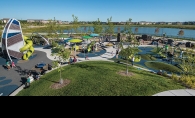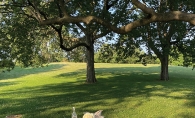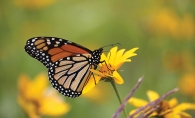
With many Minnesotans sticking closer to home during the pandemic, folks have been looking for inspired ways to use their newfound time and engage in socially-distanced endeavors. For some, that meant welcoming pets into their homes.
Rachel Mairose, executive director of Secondhand Hounds in Minnetonka, says the shelter witnessed an uptick in interest for pet adoptions and fostering. “Our large dog coordinator had a 75 percent increase in the number of lives saved over the summer,” Mairose says. “Over the summer and into fall, we rarely have dogs stay [available for adoption] on the website more than a couple hours.”
“[Pet adoptions] is the silver lining of this whole pandemic for us,” Mairose says. “The amount of lives not only Secondhand Hounds has been able to save, but every rescue across the country, is amazing.”
With so many first-time pet owners bringing animals into their homes and exploring the socially-distanced outdoors, it brings to question thoughts about how to properly care for the animals. Spending time outdoors is healthy for owners and their pets, so where are good areas to take pets for a walk? At home, is there anything owners can do to make sure landscaping elements are pet friendly? We turned to some experts for answers.
There are plenty dog parks dotted throughout the Metro, but did you know that there’s one nestled in the Minnesota Landscape Arboretum? The Arboretum Dog Commons is “a place where members [dog-added membership required] and their leashed dogs can enjoy the beauty of the arboretum together,” says Jean Larson, PhD, manager of the arboretum’s Nature-Based Therapeutic Services and assistant professor at the Earl E. Bakken Center for Spirituality and Healing at the University of Minnesota.
When you’re out and about, Larson says that it’s essential to let dogs follow their instincts while staying on marked paths. While humans are used to moving at their own speed, it’s important to allow dogs to have a say in the pace. “When you are on a walk with your dog, let your dog sniff.” Larson says. “Sniffing on a walk is extremely important for a dog’s wellbeing, and it allows us humans to slow down and enjoy the walk, too.”
Heading out for exercise and socialization is important for pets, but, let’s face it, they spend a vast majority of their time in their own backyard. Larson gives pet owners a few tips for pet-safe yard care at home. “Invest in a quality fence for your yard,” Larson says. “Physical fencing allows your dog to roam freely and stay safe.” She also says that careful supervision and recognizing your dog’s habits can be a great way to create a space he/she will enjoy. Is he a digger? Provide a sandpit for digging. Is she a sniffer? Feature areas of heavier cover where your dog can happily nose around. Does your dog like to sunbathe? Find a sunny spot where your dog can warm his belly.
Larson recommends using dog-safe materials for home landscaping and warns against cocoa bean mulch and commercial weed killers. Kristi Flynn, DVM, assistant professor, Primary Care, University of Minnesota College of Veterinary Medicine, says that often, fertilizers with bone meal can be dangerous, proving irresistible for some dogs and can make them sick if they eat too much of it.
Homeowners should be mindful about what’s in their gardens. Yews, castor bean, holly and lilies are plants that can quickly become dangerous to pets if ingested. “The best prevention for keeping your dog healthy is to research plants that work in your zone and are safe for your dogs,” Larson says. She suggests books like Dog Friendly Gardens by Cheryl Smith. Pet owners Visit the American Society for the Prevention of Cruelty to Animals’ online library of poisonous plants.
While owners can’t always know if a dog has ingested a dangerous plant, there are a few signs that are important to note. “Some plants can cause drooling or mild [gastrointestinal] signs right away, while others can have more serious adverse effects delayed after ingestion,” Flynn says. If you are worried that your pet has eaten something he/she shouldn’t, Flynn recommends contacting a veterinarian or a pet poison center, including the Pet Poison Helpline at 855.764.7661.
If you have questions about your pet’s health, don’t risk it. Contact your veterinarian.
Born to Run
In addition to local parkland (Find out cities’ regulations regarding on- and off-leash pet areas, including permits.), here’s a shortlist of some area dog parks.
4 Paws Dog Park at Plymouth Playfield, 9755 36th Ave. N, Plymouth
Brookdale Park, 7650 June Ave. N., Brooklyn Park
Environmental Nature Area, 10201 West River Road, Brooklyn Park
Cedar Knoll Park, 2541 Nevada Ave., S., St. Louis Park
Crow-Hassan Park Reserve, 12595 Park Drive, Hanover
Dakota Park, 2643 Dakota Ave. S., St. Louis Park
Elm Creek Reserve Dog Park, 12400 James Deane Parkway, Maple Grove
Fish Lake Regional Park Dog Park, 14900 Bass Lake Road, Maple Grove
Happy Tails Dog Park at Oakwood Playfield in the hockey rink, 1700 County Road 101, Plymouth
Iron Horse Dog Park, 5180 Kentucky Ave. N., Crystal
Lake Minnewashta Regional Park, 6900 Hazeltine Blvd., Excelsior
Minnesota Landscape Arboretum, 3675 Arboretum Drive, Chaska
Plymouth Dog Park, 17005 County Road 47, Plymouth
Susan E. Lurton Park, 3580 Wayzata Blvd., Long Lake









